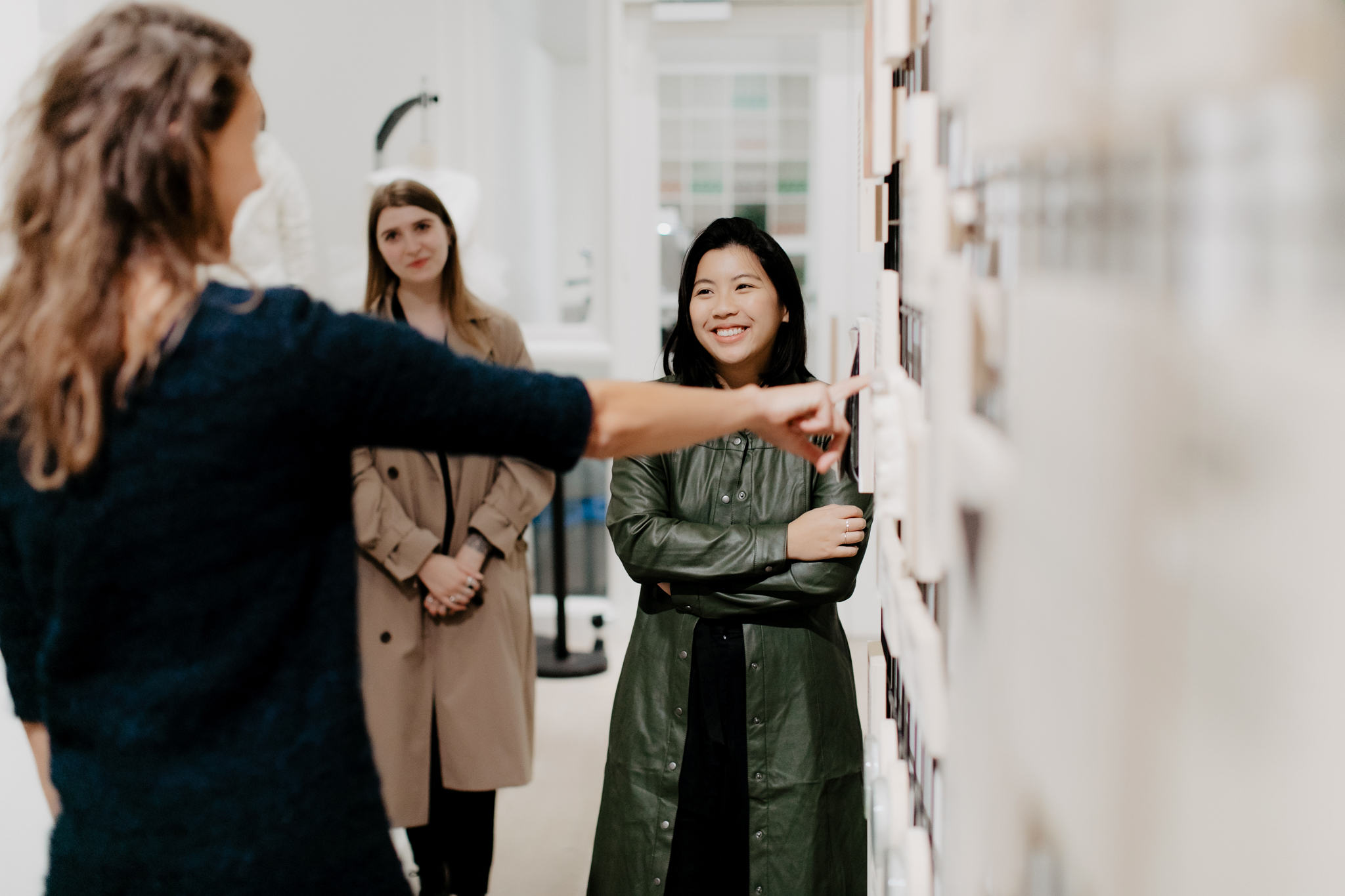Good Fashion Action Plan
The Fashion for Good Museum developed the Good Fashion Action Plan so visitors can interact with the museum space. Throughout their visit, people collect actions and put together a personalised plan which empowers them to take steps beyond the museum.
The Fashion for Good Museum aimed to change the hearts and minds of its visitors by telling stories behind the clothes we wear, showing visitors how to take action and have a positive impact on the fashion industry. Exhibitions and programming in other forms were multidisciplinary and explored a pluralistic dialogue of technical and industrial innovation as well as the socio-cultural dimensions of the fashion industry. An important pillar of the Museum’s mission was community building and encouraging behavioural change among the public. To this end, the museum developed the Good Fashion Action Plan, a digital mechanism to empower visitors to take action after their museum visit and adopt more sustainable consumption habits. This mechanism also worked to build a community of visitors, staying in touch with those who participated to continually support people in their journey towards sustainable consumption. The Good Fashion Action Plan (GFAP) is a personalised digital journey which took the visitor along the interactive installations of the Museum, via the history of the fashion industry, the production steps of a T-shirt, and sustainable innovations showcasing future technologies and solutions that can help change the fashion industry.
Visitor journey
Upon entering the museum, the visitor received a bracelet with an RFID chip. They checked in and used the bracelet to collect commitments, practical tips and badges by tapping their bracelet on ‘action stations’ throughout the museum space. Each ‘action’ falls within one of five categories: Use, Reuse, Choose, Consider and Activate. Examples of actions include: a pledge to wash your clothes at a lower temperature so they last longer, or a commitment to taking a sewing course to learn how to repair your clothes. At the end of a visit, the visitor checked out again, selected their favourite actions (up to 10) and converted these into a personalised plan, which they would then receive via email. This personalised action plan encourages visitors to make more sustainable fashion consumption choices after their visit, ensuring that any resolutions are realistic and enjoyable. Visitors would also receive a follow-up email to learn whether they succeeded and to assess whether visitors shared what they learned with those around them. In this way, the museum digitally connected visitors, building a community that collectively makes more conscious choices. The engagement continued through special programming, digital campaigns, workshops and events held at the Fashion for Good Museum.
Intended outcomes of the GFAP
By completing the Good Fashion Action Plan, visitors gained an understanding of their own buying and consumption habits and how they can become a conscious consumer and be more sustainable in their daily lives. They created a concrete and achievable action plan to change their fashion behaviour through simple actions they can apply in daily life. Crucially, the GFAP embraces positive messaging, inspiring and empowering individual visitors rather than making them feel overwhelmed with the scale of the issues in the fashion industry. It is an approachable, solution- and action-oriented tool that focuses on the positive opportunities created by each challenge. At the core of the Fashion for Good mission is a strongly held belief in the power of positivity and playfulness. The Museum led with a tone of optimism that embodies a proactive attitude: fashion can and will be a force for good and it is this positive approach that will ultimately inspire change in the thoughts and actions of our visitors. A visit to the museum was intended to help visitors along their sustainable fashion consumption journey: making completely unaware consumers curious about sustainability and already curious or somewhat conscious consumers (more) conscious. By creating a fun and accessible educational experience, and encouraging hands-on interaction with the museum space, the GFAP helped visitors engage with the subject material, become part of a supportive community of people with an interest in sustainable fashion and ultimately have more power and agency when it comes to informed decision-making and fashion consumption.
Other Education Programmes

Museum Legacy
On this page you find our Museum legacy document, celebrating the incredible journey of the Fashion for Good Museum. As the Museum doors have closed on June 5th, 2024, we want to extend our deepest gratitude to you, our amazing community of conscious consumers and visitors.

Educational Resources
Change starts with the new generation of industry professionals, but also with the individual consumer. Our educational programmes and tools help younger generations understand their role in the narrative, giving them the knowledge and tools to take action and change fashion for the better.

Past Exhibitions
Discover some of our past exhibitions on this page. Read up on our approaches to sustainable exhibition development and discover the artists and designers we featured in our exhibitions GROW, Knowing Cotton Otherwise and What Goes Around Comes Around.
